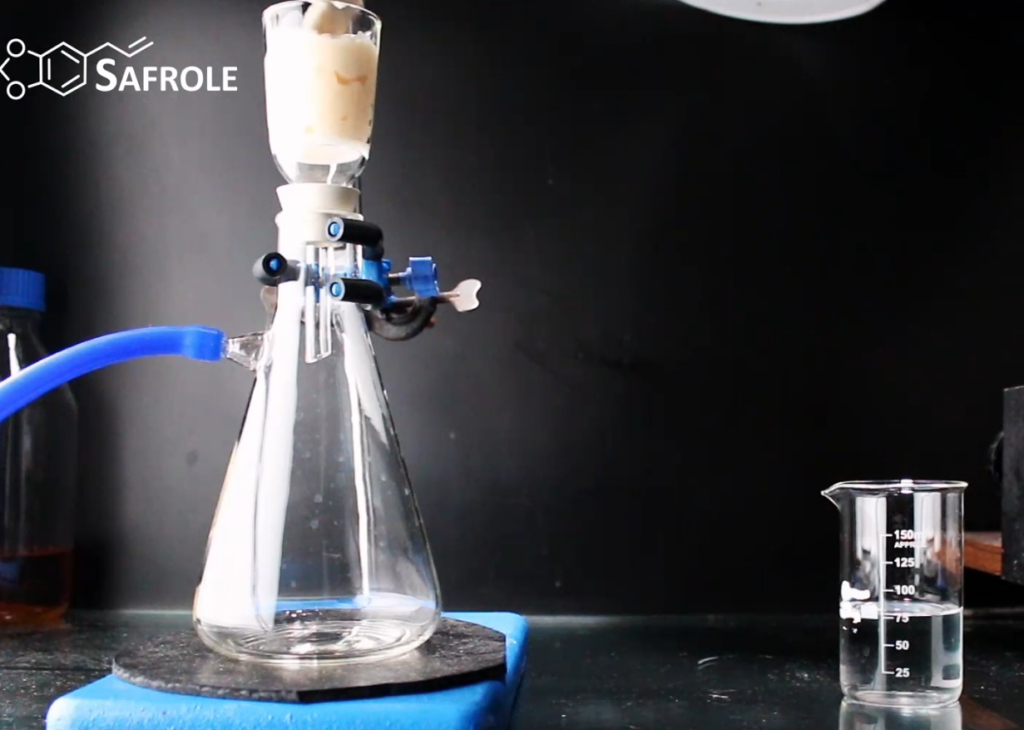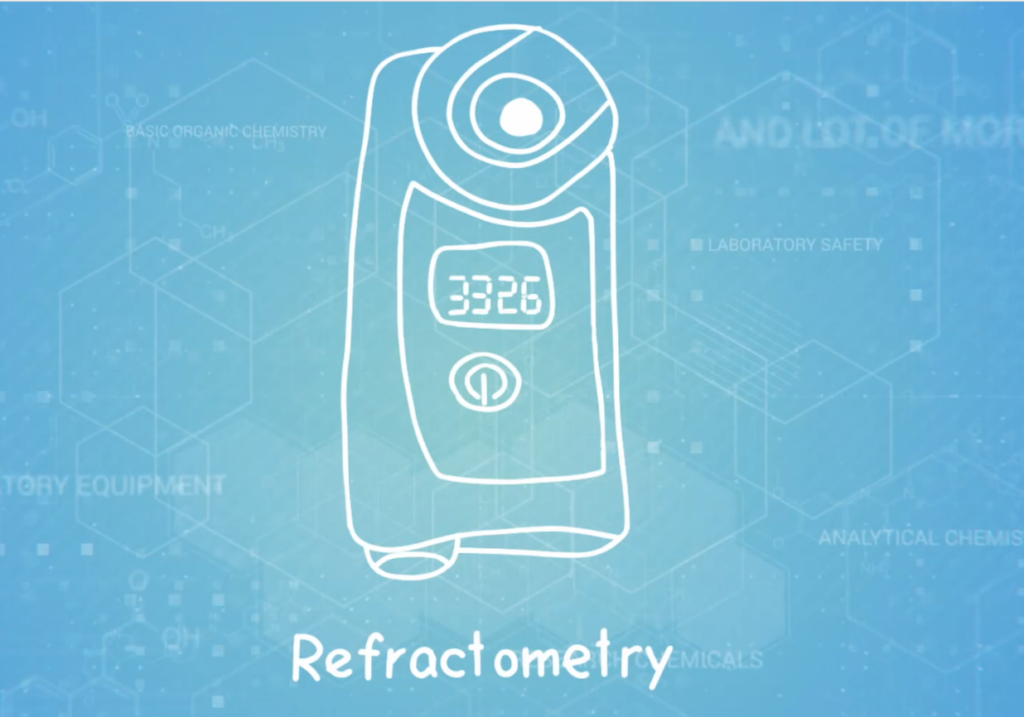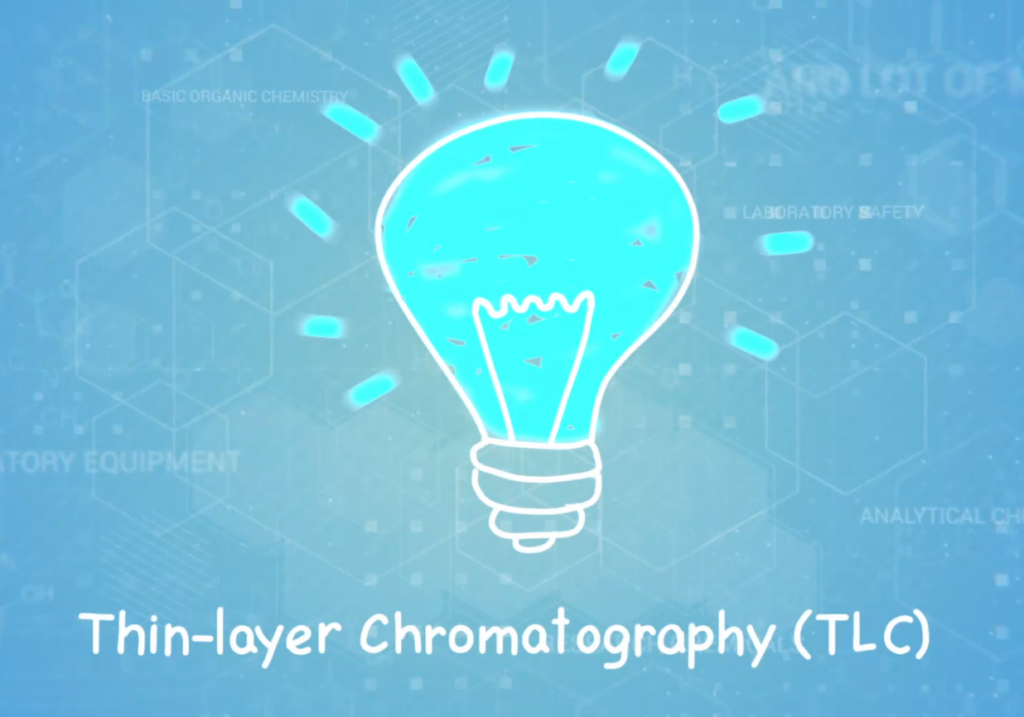- The process of creating a drug - May 23, 2023
- How do scientists model mental disorders in animals? - May 23, 2023
Introduction
The process of purifying phenylpropanone bisulfite is a crucial step in the production of high-quality chemicals, as impurities can compromise the integrity of the final product. In this article, we delve into the theory and practical steps involved in bisulfite purification. The purification experiment involves a series of well-defined steps, from the preparation of sodium bisulfite to the solubility testing of the phenylpropanone bisulfite derivative in various solvents. By the end of this article, you will have a comprehensive knowledge of the bisulfite purification process, including the cheking steps, tests, and techniques used to obtain a highly pure final product.
Theory of Bisulfite Purification
Theory of bisulfite ketone purification is concerned by its physical conversion after bisulfite adduct formation. Ketone bisulfite adduct turn into solid form, which can be washed from impurities. Aldehydes react with sodium bisulphite (sodium hydrogen sulphite) to give addition products. Ketones, except for methyl ketones, do not react with sodium bisulphite due to steric hindrance (crowding).

The procedure is quite simple, a formed sodium bisulfite adduct is filtred and washed by a solvent, which isn’t dissove this adduct but dissolve impurities. After this procedure, the solid adduct is turned back into ketone form by sodium carbonate addition and separated from water.


Step-by-step experiments
In the following experiment we’ll take phenylacetone as an example for sodium bisulfite purification. The dirty phenylacetone is subject to the following procedures:
1. Tests: refractometry, TLC and boiling point determination, which are showing that the substance under study is quite polluted;
2. Preparation of sodium bisulfite;
3. Phenylpropanone bisulfite derivative formation;
4. Checking phenylpropanone bisulfite derivative solubility
5. Phenylpropanone bisulfite derivative washing and phenylprobanone steam distillation.
6. Tests: refractometry and TLC;
Tests
The following tests are carried out in order to determine a purity extend of phenypactone, which was taken for purification. These procedures are optional and provided for demonstration purposes. Refractometry test shown Read more about refractometry, TLC and boiling point determination in Safrole blog.
Preparation of Sodium Bisulfite
Attention! With sulfur dioxide, it is necessary to work under a hood with absorbers. The gas mask is not enough for safety reasons.
1. sodium sulfite Na2SO3 29 g (in a flat–bottomed flask), sulfuric acid H2SO4 (concentration 16%) – in the left glass, distilled water 150 ml, sodium bicarbonate NaHCO3 23.4 g
Na2SO3 + H2SO4 = Na2SO4 + SO2
SO2 + NaHCO3 = NaHSO3 + CO2
- Note: NaHCO3 water solubility 9.59g/100ml. NaHSO3 water solubility 28-29g/100ml.
2. Sodium bicarbonate is mixed with water.
Note: Weakly alkaline pH.
3. An anchor of a magnetic stirrer is placed into the beaker. The stirrer is turned on.
4. A solution of sulfuric acid is poured into the gas generator flask with sodium sulfite. Sulfur dioxide gas (SO2) is started to release into a glass with a solution of sodium bicarbonate with stirring.
5. Sodium bicarbonate is gradually dissolved with CO2 releasing. As the sodium bicarbonate is dissolved, the RM (reaction mixture) is become transparent.
6. Sulfur dioxide is passed through the sodium bicarbonate solution until completely dissolved. The solution should become transparent, with a yellowish tinge. The resulting sodium bisulfite solution should have a neutral pH.
- Note: Litmus paper should not show even a weak alkaline pH. Sulfur dioxide has a discoloring effect. So that, litmus paper will not be an absolute indicator and may show an incorrect neutral pH. A guarantee, that all sodium bicarbonate reacted, can be a pungent smell of sulfur dioxide. A sulfur dioxide excess will be evaporated while RM evaporation.
7. A calculated yield of NaHSO3 is 29 g in a solution. It is for 37.5 g of pure P2P. After sodium bisulfite solution synthesis, a test tube testing reaction is required to check its interaction with P2P.
8. P2P 0.5ml is poured into a test tube. Next, bisulfite 0.5ml is placed into this test tube with a pipette. Stirr the test tube content for 30-60 sec.
- Note: It can be seen that the reaction is negative with freshly obtained sodium bisulfite. Crystallization is not occurred and solutions are divided back into layers. In this case, sodium bisulfite solution have to be concentrated by evaporation until first crystals are formed.
9. Repeat the test tube testing reaction and mix P2P 0.5 ml + sodium bisulfite solution 0.5 ml. Stir the muxture for 30 sec.
- Note: The repeated reaction with P2P was successful and gave complete crystallization, which makes it possible to obtain a P2P bisulfite derivative.
P2P Bisulfite Derivative Synthesis
10. P2P 45-50 ml is poured into the resulting solution, saturated with sodium bisulfite (in a ratio of 1:1).
11. The reagents are mixed until crystallization.
Solubility of the P2P Bisulfite Derivative in Various Solvents
This procedure is carried out for determination of a solvent, which is suitable for washing of phenylacetone bisulfite adduct. We need to find solvent, whish won’t dissolve this derevative and will dissolve its impurities. There is no data about its solubility in an open source so that we made this experiment. If you are working with phenylacetone, you don’t need to repeat this step.
12. Same samples of the P2P bisulfite derivative are placed in test tubes (numbered 1,2,3,4,5,6,7).
13. Then solvents 1-2ml are added alternately into each test tube.
- Test tube No. 1. A solvent is distilled water. Reaction – highly soluble.
- Test tube No.2. A solvent is anhydrous acetone. Reaction – partially soluble.
- Test tube No.3. A solvent is IPA. Reaction – relatively insoluble.
- Test tube No.4. A solvent is butanol. The reaction – insoluble.
- Test tube No.5. A solvent is DCM. The reaction – soluble.
- Test tube No.6. A solvent is toluene. The reaction – soluble.
- Test tube No.7. A solvent is diethyl ether. The reaction – insoluble.
- Note: Based on the obtained data, the P2P bisulfite derivative can be washed with the following solvents: IPA, butanol, diethyl ether. In the our case, IPA was chosen.

Washing of The P2P Bisulfite Derivative, Decomposition With Potassium Carbonate and P2P Steam Distillation
14. The P2P bisulfite derivative resembles a thick oil in consistency. The P2P bisulfite derivative is washed by IPA using vacuum filtration through a Schott funnel.

15. Then, without preliminary drying, the P2P bisulfite derivative is placed into a round-bottomed flask for steam distillation.
16. A potassium carbonate aqueous solution is poured into the flask. A potassium carbonate solution is added based on the calculation that K2CO3 50g is needed for P2P bisulfite derivative 79g. The content is stirred thoroughly.
17. The distillation flask is heated up evenly.
18. The pure P2P is condensed with H2O in a condenser and collected into a receiving flask. P2P steam distillation is carried out until the end of oily drops dripping into the receiver flask.
Separation of P2P From Water
19. The content from the receiving flask is poured into a separatory funnel and layers are completely separated.
20. The bottom layer is carefully drained into a container with silica gel 1.5g. It is left to adsorb moisture residues.
- Note: Possible P2P losses: losses for solubility determining of the P2P bisulfite derivative; the remainder in form of an emulsion in water and in the distillation flask. The weight of pure P2P is 19.15g.

Refractometry of The Resulting P2P
Refraction index, determined by the device nD=1.5111. This index is correspond literature data for phenylacetone within the margin of error, which is 1.5107.

Thin-layer Chromatography (TLC) of P2P
This procedure is carried out to approve the refraction analysis result and compare with TLC analysis of dirty phenylacetone.
Procedure
- 1. A P2P solution in DCM (1:1): P2P 0.5ml + DCM 0.5ml. A solvent mixture ethanol 88% + DCM (1:1). Merck Millipore TLC Silica gel 60 F254 plates. Pasteur capillary pipette.
- 2. Developers: UV-254 lamp and an aqueous alkali solution of sodium nitroprusside
- 3. A P2P solution is applied to the TLC plate point-by-point. It is applied repeatedly as the DCM is evaporated.
- 4. An edge of TLC plate with the sample is immersed into the solvent mixture. It is important to keep the sample spot above the solvent level.
- 5. The solvent is impregnated two thirds of TLC plate.
- 6. Then the plate is removed from the solvent and dried in a suspended position on air.
The developed chromatogram is clearly showed the presence of only one substance. The TLC developing of sodium nitroprusside with an alkaline solution confirmed that there is only P2P.

Conclusion
In conclusion, the bisulfite purification process is a meticulous and indispensable technique for achieving chemical purity. This article has provided the overview of the theoretical underpinnings of bisulfite purification and the step-by-step experimental procedures required to obtain a pristine phenylpropanone bisulfite derivative. The careful selection of solvents and the systematic elimination of impurities have been demonstrated, ensuring that the final product meets the stringent quality standards necessary for various applications. By following these protocols, chemists and researchers can carry out ketone purification. This method is optional in case of phenylpropanone purification procedure but can be used for other ketones.

